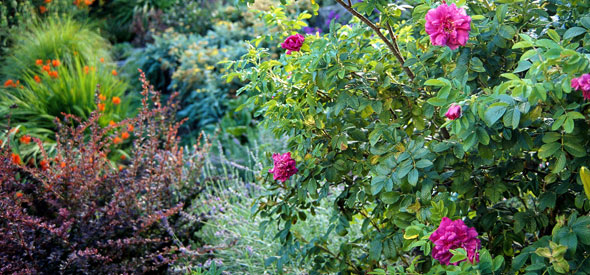Tips & Advice

HOW TO MAKE RAISED FLOWER BED
• Plan your beds by drawing them out within the context of a diagram of your yard. How many do you want? How large do you want them to be? How high will the walls be? (See Tips below for information about determining your beds’ height.)
• Calculate how much wood you’ll need for the beds you want to build. (Think of the beds as boxes without tops or bottoms.)
• Buy the lumber – make sure you get pressure-treated wood; otherwise it will rot quickly from contact with wet soil – and cut it or have it cut. Remember that you’ll need four sides to each bed. Railroad ties or landscape timbers work well for very short beds. For taller beds, 2-by-12 lumber is a good choice; it’s sturdy and you’ll end up with beds that are about 10 inches high – comfortable for working. You may also use stones to act as decorative retaining wall.
• Use a tape measure and flour sprinkled on the ground to mark out your beds, making sure to leave adequate room between the beds for a path. Beds should be narrow enough that you can reach the middle from both sides, especially if you’ll use them for labor-intensive crops like vegetables.
• Rid the bed of plant matter by stripping turf, weeding and/or moving plants and flowers if necessary.
• Dig a trench under the edge of the bed. Its depth will depend on your building materials, but it should be at least a couple of inches deep; if you’re on a slope, you’ll need to dig the uphill side in deeper than the downhill side so that the box’s walls will remain even in height.
• Build the box (if you’re using railroad ties, just lay them out) and settle it into the trench. Get the box as solid and level as you can, then pack dirt back down around the edge.
• Fill your beds with soil. If drainage is a problem – say, if you’re building beds on clay or hardpan – fill with a 2-inch layer of gravel and then of sand and then fill with soil.
NOTE:
The worse your soil is, the higher you’ll need to build your beds. If your soil is rich and loamy, sinking railroad ties a couple of inches into the soil will do. If you’re starting with hard red clay, you’ll want to go up at least a foot, fill with a couple of inches of gravel and sand for drainage, and then fill with good soil.
Sinking posts (landscape timbers work well) at the inside corners of the beds and constructing the boxes around them will anchor the beds more solidly.
Warp will happen eventually, and it will follow the wood’s natural grain. To minimize this, position boards so that any visible curve is on the outside (the side you’ll be nailing). That way, when the boards warp the nails won’t pop out.
You can buy premixed soil – soil that contains a good balance of sand, peat, and organic matter like compost – at garden and hardware stores (it’s usually called garden soil, potting soil or topsoil), but you can go through a lot of 25- or 40-lb. bags if you’re filling a big bed. Consider ordering it (look under “soil” in the yellow pages) and having it delivered, especially if you don’t own a truck; it’s usually less expensive and it’s certainly easier.
If drainage is a serious problem in your yard, you may want to contact us to help you with the planning.
